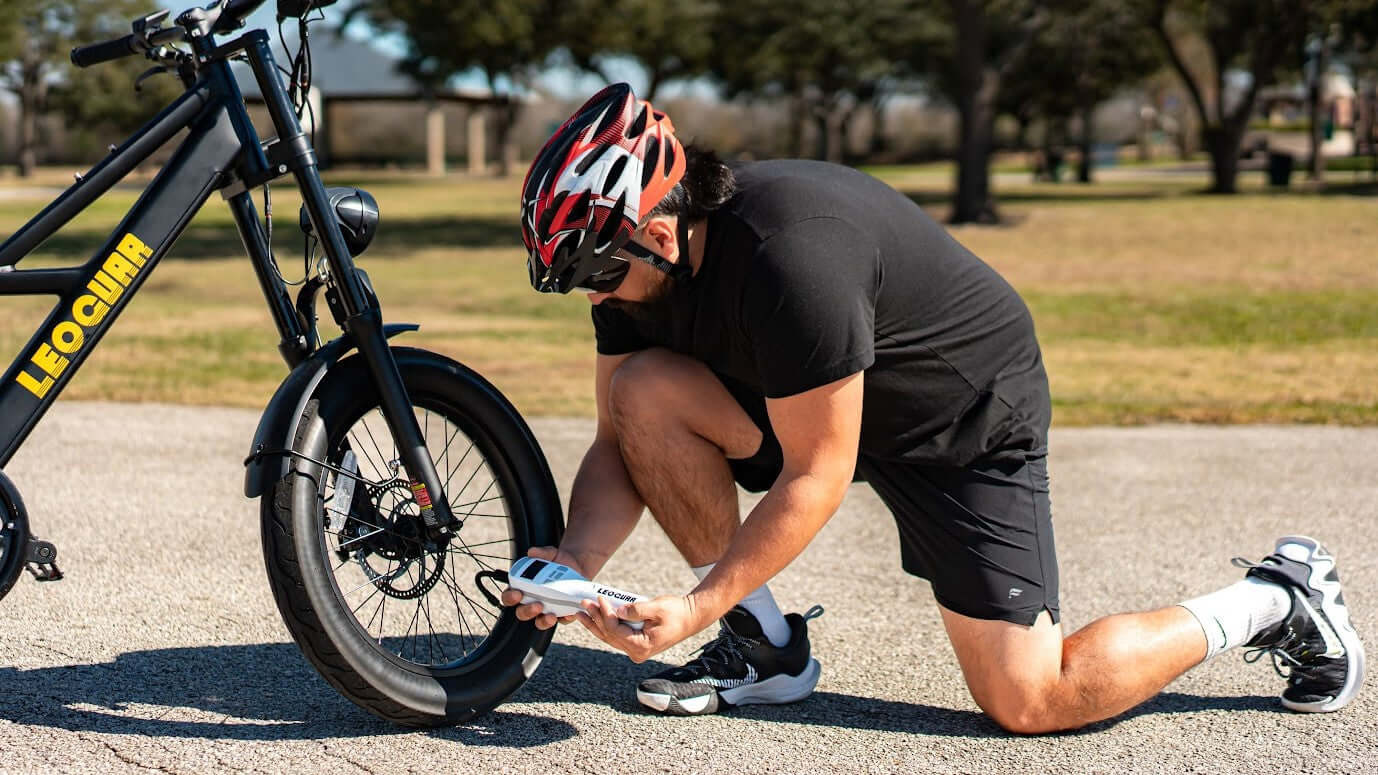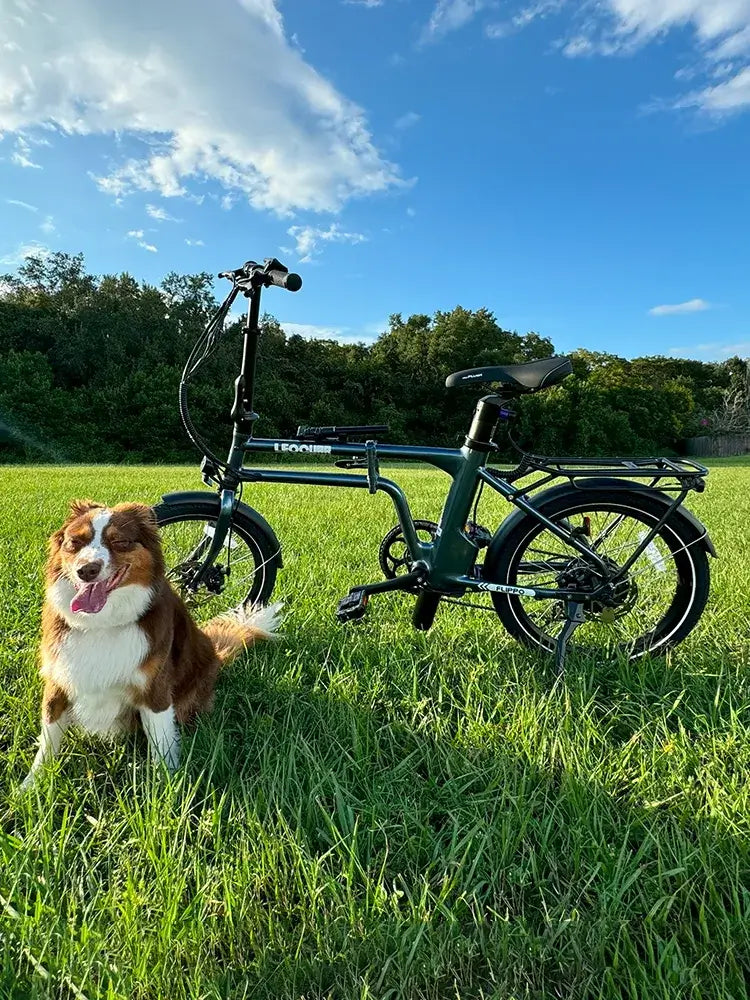
Can I Use a Car Tire Pump on My Bike? Yes, But Read This
You have a flat bike tire and you're miles from a bike shop. But you're standing right next to a car. Can you use a car tire pump on your bike?
Yes, you can use a car tire pump on your bike, but it comes with serious risks. A car pump is a powerful tool made for a different job. Using it wrong can cause explosive over-inflation, damaging your tire, your wheel, and possibly causing injury. The main problems are valve fit, the huge difference in air volume and pressure delivery, and the poor accuracy of most car pumps for this task. Before you even think about connecting that hose, let's walk through how to do it safely.
Can I Use a Car Tire Pump on My Bike? The First Hurdle: Valves
The most important factor is the valve type. Most car pumps work with one specific valve, so you need to check yours first.
Schrader Valve (The "Car" Valve)
This is the valve you want to see. It's the same as the valve on a car tire - wider than a Presta valve, with a flat top and a spring-loaded pin in the center. If your bike has Schrader valves, found on mountain bikes, hybrids, and kids' bikes, a car pump will connect directly. You won't have any problems.
Presta Valve (The "Road Bike" Valve)
This valve is common on road bikes and higher-end mountain bikes. It's much thinner than a Schrader valve and has a small locknut at the very top. Before you can inflate it, you must unscrew this locknut a few turns until it moves freely. A standard car pump chuck will not fit onto a Presta valve.
The Simple Solution: The Adapter
If you have Presta valves, you need a Presta-to-Schrader adapter. This tiny, cheap brass fitting is a must-have for every cyclist. You simply unscrew the Presta locknut, screw the adapter onto the valve threads, and your Presta valve now works exactly like a Schrader valve.
| Feature | Schrader Valve | Presta Valve |
|---|---|---|
| Appearance | Wider, flat top, center pin | Thinner, top locknut |
| Common On | Cars, mountain bikes, hybrids | Road bikes, performance bikes |
| Car Pump Fit | Direct fit, no adapter needed | Requires a Presta-to-Schrader adapter |
Pressure vs Volume: Risks of Using a Car Tire Pump on a Bike
Understanding why using a car pump is risky comes down to one simple idea: the difference between filling a swimming pool and filling a drinking glass.
Car tires are high-volume, low-pressure systems. They hold a huge amount of air, but at a low pressure. A typical car tire might be inflated to 35 PSI. Car pumps, especially the air compressors at gas stations, move a huge volume of air very quickly to fill that large space.
Bike tires are the complete opposite: low-volume, high-pressure systems. A road bike tire holds a tiny fraction of the air volume of a car tire but at a very high pressure, often between 80 and 120 PSI.
The danger is using a high-volume pump on a low-volume tire. Think of it like trying to fill a shot glass with a fire hose. The pressure in the bike tire will jump almost instantly. A second of not paying attention is all it takes to go from flat to dangerously over-inflated, which can cause the tire to blow off the rim with explosive force.
To put it in perspective, here are some typical pressure ranges:
- Car Tire: 2.5 BAR / 35 PSI
- Mountain Bike Tire: 2.0 BAR / 30 PSI
- Road Bike Tire: 7.0 BAR / 100 PSI
Given this risk, many cyclists are turning to purpose-built electric inflators, which offer a safer, more controlled option. As noted in a deep dive into modern inflation tools, these devices combine portability with the precision needed for high-pressure bike tires.
How to Safely Inflate a Bike Tire with a Car Pump
If a car pump is your only option, you must follow a strict, safety-focused process. This is the exact process we follow to minimize risk when a proper bike pump isn't available.
-
CHECK the Recommended PSI: Before you do anything else, look at the sidewall of your bike tire. The manufacturer will have printed a recommended pressure range (like "Inflate to 80-110 PSI"). This is not a suggestion; it's a safety limit.
-
PREPARE the Valve: For a Schrader valve, simply remove the plastic dust cap. For a Presta valve, unscrew the top locknut and then securely screw on your Presta-to-Schrader adapter.
-
SET the Pump (If Possible): If you are using a modern portable 12V car compressor, it likely has an auto-shutoff feature. Set this to 5-10 PSI below your target pressure. For example, if your tire needs 90 PSI, set the pump to 80 or 85 PSI.
-
INFLATE in Short Bursts: This is the most important step. Do not just press the lever and hold it down. Press it for only one to two seconds at a time. You will hear a short, loud burst of air.
-
CHECK with a Separate Gauge: After each short burst, remove the pump chuck from the valve and check the pressure with a separate, reliable pressure gauge. Do not trust the built-in gauge on a gas station air hose. They are not accurate and not made for the fine measurements bike tires require.
-
ADJUST and Finalize: If you are still below your target PSI, repeat steps 4 and 5—a short burst, then a pressure check. Continue this careful process until you reach the desired pressure. If you accidentally go over the target, use the tip of the pressure gauge or a small tool to gently press the pin in the center of the valve to release a small amount of air.

Finding the Right Tool: When a Car Pump Works and When It Doesn’t
While a car pump can work in an emergency, a dedicated bike pump is always the safer, faster, and better tool for the job. Investing in the right pump will save you time and prevent potential damage. Expert sources provide comprehensive reviews of the best bike pumps, consistently highlighting the value of a quality floor pump for home use. The proper technique for using a bike pump is also far more comfortable and efficient.
For riders on the go, reviews of modern electric mini pumps show a growing market for portable, precise solutions.
| Pump Type | Best Use Case | Speed | Precision/Control | Portability | Valve Compatibility | Overall Recommendation |
|---|---|---|---|---|---|---|
| Gas Station Pump | Emergency only, with extreme caution. | Very Fast | Very Poor | Not Portable | Schrader only (or Presta w/ adapter) | Not Recommended. The high volume and poor gauges create significant risk. Learning how to safely inflate a car tire with these shows the importance of gauge accuracy for all tires. |
| Portable 12V Car Compressor | Emergency backup if it has a reliable auto-shutoff feature. | Fast | Fair to Good (with shutoff) | Poor (Requires a car) | Schrader only (or Presta w/ adapter) | A viable emergency option, but only if you can preset the pressure. Still riskier than a bike-specific pump. |
| Floor Bike Pump | Primary pump for home maintenance. | Fast | Excellent | Not Portable | Excellent (Most heads fit both Schrader & Presta) | Highly Recommended. The best tool for the job. Provides fast, safe, and accurate inflation every time. A must-have for every cyclist. |
| Mini Bike Pump / Hand Pump | On-the-ride flat tire repair. | Slow | Fair | Excellent | Good (Most support both valve types) | Essential Gear. Every cyclist should carry one on their rides for roadside repairs. It takes effort but is reliable and safe. |
Should You Use a Car Tire Pump on a Bike?
So, can you use a car tire pump on your bike? Yes, in a pinch, but it should be treated as an emergency-only solution, not a regular maintenance tool.
If you must use one, remember these non-negotiable safety rules:
- Make sure you have a Schrader valve or a Presta-to-Schrader adapter
- Know your tire's maximum PSI and never exceed it
- Inflate in very short, 1-2 second bursts
- Check the pressure with a separate, reliable gauge after every burst
For long-term peace of mind and safety, the best course of action is to invest in the right tools. A quality floor pump with a built-in gauge should be in every cyclist's garage. It's faster, far safer, and designed specifically for the high-pressure, low-volume needs of bike tires. For on-the-road protection, a compact mini-pump or a CO2 inflator is essential kit.
Frequently Asked Questions
1. Can I use a gas station air pump for my bike tires?
Yes, but only in emergencies and with extreme caution. Gas station pumps deliver high volume air very quickly, which can cause dangerous over-inflation in seconds. Always inflate in 1-2 second bursts and check pressure frequently with a separate gauge.
2. What's the difference between Schrader and Presta valves?
Schrader valves are wider with a flat top and center pin, commonly found on cars, mountain bikes, and hybrids. Presta valves are thinner with a locknut on top, typically used on road bikes and high-end mountain bikes. You need an adapter to use a car pump on Presta valves.
3. How much PSI should I put in my bike tires?
Check the sidewall of your tire for the manufacturer's recommended pressure range. Road bikes typically need 80-120 PSI, mountain bikes need 25-35 PSI, and hybrid bikes usually need 50-70 PSI. Never exceed the maximum PSI printed on your tire.
4. Why is using a car pump dangerous for bike tires?
Car pumps are designed for high-volume, low-pressure car tires. Bike tires have much smaller air volume but require higher pressure. This means the pressure rises extremely fast when using a car pump, making it easy to over-inflate and potentially cause the tire to explode off the rim.
5. What's the best type of air pump for bike tires?
A dedicated floor bike pump is best for home use because it's fast, accurate, and safe. For rides, carry a mini hand pump or CO2 inflator. These tools are designed specifically for bike tires and give you better control over pressure than car pumps.
















































Leave a comment
Please note, comments must be approved before they are published.
This site is protected by hCaptcha and the hCaptcha Privacy Policy and Terms of Service apply.